Weeki Wachee Preserve: Hernando County’s Natural Beauty
Weeki Wachee Preserve is a protected area in Hernando County, Florida, covering over 11,200 acres of land. The Southwest Florida Water Management District owns the preserve. It provides many wildlife habitats, including several miles along the Weeki Wachee River, portions of the Mud River, dense hardwood swamps, freshwater and saltwater marshes, and pine-covered sandhills. It is a popular destination for nature enthusiasts, hikers, and birdwatchers.
Most fascinating is Weeki Wachee Preserve, which has some of the most jaw-dropping scenery, as beautiful as the shorelines of Michigan, and is almost a secret hideout. Locals visit this preserve, but tourists rarely do.
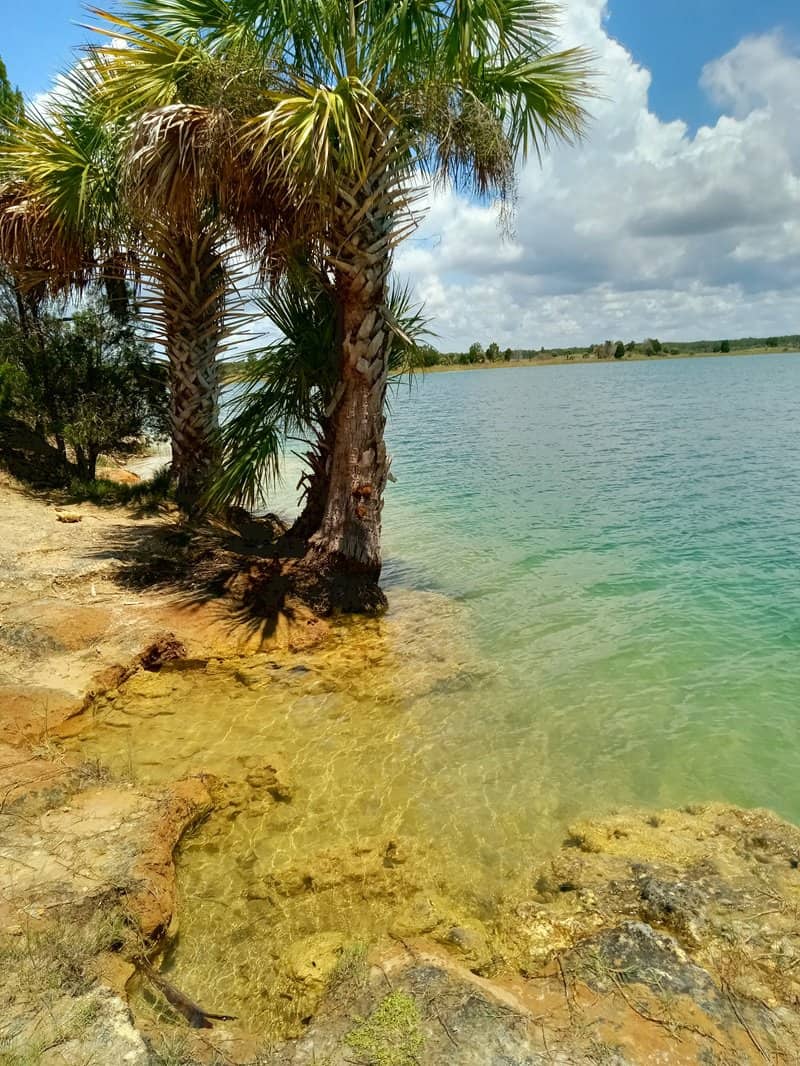
This post may contain affiliate links. Please read our disclosure and privacy policy for more information.
About Weeki Wachee Preserve
The Weeki Wachee Preserve is centered around a mine reclamation area where limestone was once extracted. The site has since been restored and is home to diverse flora and fauna. The preserve is also an essential habitat for the Florida black bear and forms the most significant remaining Florida black bear habitat along the peninsular Gulf Coast. Visitors can explore the preserve’s hiking trails, which offer scenic views of the surrounding landscape and wildlife.
History of Weeki Wachee Preserve
The preserve was established in 2001 by the Southwest Florida Water Management District to protect the area’s natural and cultural resources. The preserve is part of a regional conservation land system extending to Crystal River Buffer Preserve, preserving western Florida’s southernmost coastal hardwood hammock.
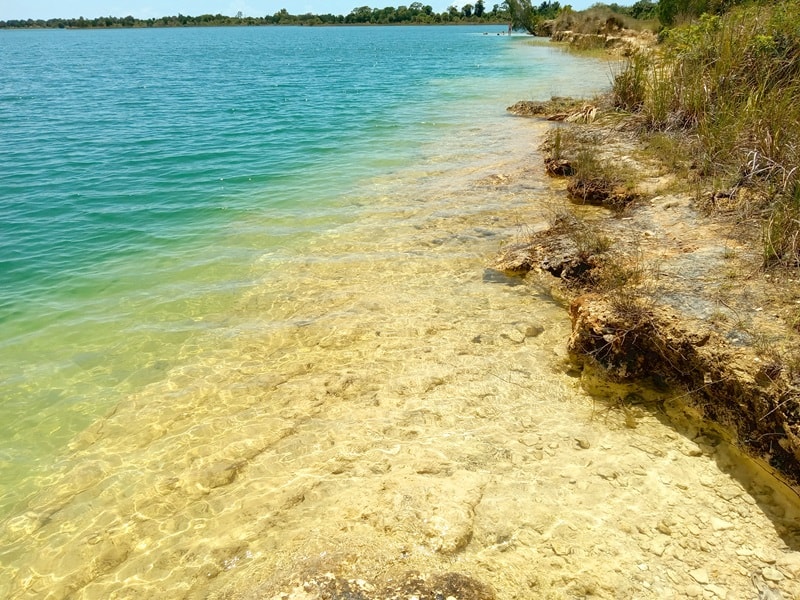
Geographical Features Of Weeki Wachee Preserve
The preserve encompasses diverse ecosystems, including hardwood hammocks, freshwater and saltwater marshes, and pine flatwoods. It is home to various wildlife, including the Florida black bear, an essential habitat for the species. Other animals found in the preserve include alligators, otters, and a variety of bird species. Visitors can enjoy hiking, birdwatching, and fishing in the preserve.
One of the most notable features of the preserve is the Weeki Wachee River, which runs through the eastern portion of the preserve. The river is a popular spot for kayaking and canoeing, and visitors can rent equipment from nearby outfitters. The Weeki Wachee River is also home to various fish species, including bass and bluegill.
Wildlife and Biodiversity
Weeki Wachee Preserve is home to diverse wildlife and plant species. The preserve’s rich mosaic of habitats includes several miles of Weeki Wachee River frontage, portions of the Mud River, freshwater and saltwater marshes, dense hardwood swamps, and pine-covered sandhills.
The preserve is an essential habitat for the Florida black bear, which is listed as a threatened species in Florida. Visitors may also spot white-tailed deer, wild turkey, gopher tortoise, and various bird species such as woodpeckers, hawks, and owls.
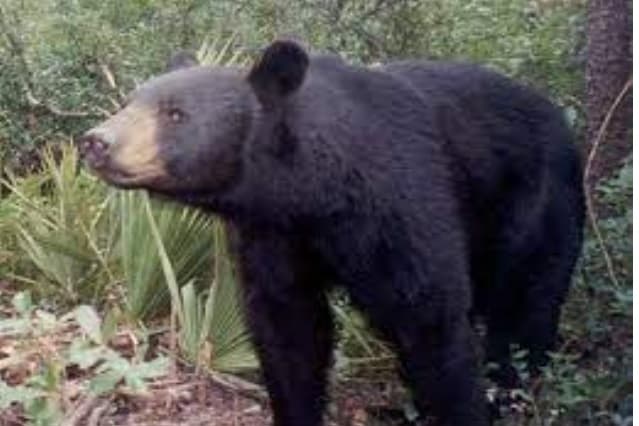
In addition to the Florida black bear, the preserve is home to several other threatened or endangered species, such as the eastern indigo snake, gopher frog, and Sherman’s fox squirrel. The preserve’s diverse habitats provide essential breeding, nesting, and feeding grounds for these species.
It is also home to the gopher tortoise, has some form of state-level protection in each state where it occurs, and is a State-designated Threatened species in Florida. It’s not uncommon to see these guys chomping away on the vegetation.
Facts About Gopher Tortoises
- Scientific name: Gopherus polyphemus
- Conservation status: Threatened to Endangered
- Size: 9 to 11 inches as adults (23-28 cm), 10 pounds (4.5 kg)
- Lifespan: 40-60 years in the wild, 90 in captivity
- Shell color: Tan, brown, or gray
Video of a Gopher Tortoise at Weeki Wachee Preserve
Vegetation
Weeki Wachee Preserve is also home to various plant species, such as the southern magnolia, bald cypress, and cabbage palm. The preserve’s hardwood swamps and pine-covered sandhills provide habitat for rare plant species, such as the Florida bonanza and the scrub blazing star.
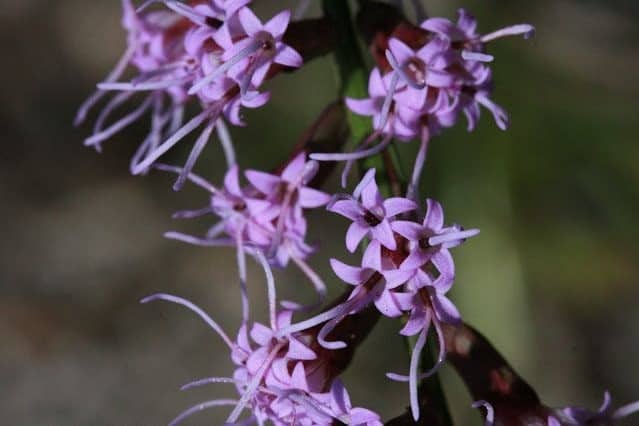
Visitors are encouraged to respect the preserve’s wildlife and plant species by staying on designated trails, keeping a safe distance from animals, and not disturbing or removing any plants. By doing so, visitors can help preserve the unique biodiversity of Weeki Wachee Preserve for future generations to enjoy.
Recreational Activities At Weeki Wachee Preserve
Weeki Wachee Preserve is a nature lover’s paradise with various recreational activities available to visitors. There is something for everyone, from swimming and snorkeling to hiking and biking.
Swimming
Weeki Wachee Preserve is home to crystal-clear waters. Swimming in Wachee Preserve is prohibited. This said you will see teenagers swimming near the sand bars.
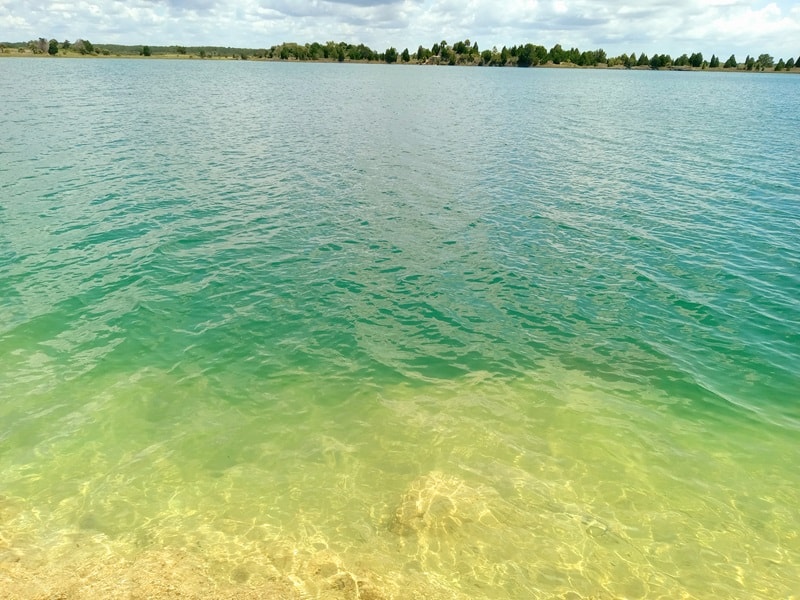
Hiking and Biking
The Weeki Wachee Preserve is a popular destination for hiking and biking enthusiasts. Several trails have varying difficulty levels, ranging from easy nature walks to more challenging hikes. Visitors can enjoy the scenic views of the preserve’s natural beauty while getting some exercise at the same time.
Bird Watching
Weeki Wachee Preserve is home to a diverse bird species, making it a popular destination for bird watchers. Visitors can spot everything from bald eagles and ospreys to woodpeckers and warblers. The preserve’s natural habitats, including the hardwood hammocks and wetlands, provide the perfect environment for various bird species to thrive.
Boating
- Lakes open to hand-launched boats, canoes, and kayaks.
- Electric trolling motors are allowed.
- Gas-powered outboards are not allowed.
- Use caution launching boats — banks can be unstable. Do not back vehicles or trailers onto the bank.
- Boats must be carried to the lake — there is no boat ramp.
Conservation Efforts
The Weeki Wachee Preserve is a critical part of a regional conservation land system extending up to Crystal River Buffer Preserve, preserving western Florida’s southernmost coastal hardwood hammock. The Southwest Florida Water Management District (SWFWMD) purchased the property in 1995 to protect the natural resources and provide opportunities for outdoor recreation. Since then, the district has been working tirelessly to manage the preserve and preserve its natural beauty for future generations.
One of the primary conservation efforts at the Weeki Wachee Preserve is restoring the natural habitat. The district’s scientists, volunteers, and staff have spent several years combating invasive plant species in various ways. They have also implemented prescribed burning to help maintain the natural ecosystem and improve wildlife habitat. The district has also worked to restore the wetlands in the preserve, which are critical for water quality and flood control.
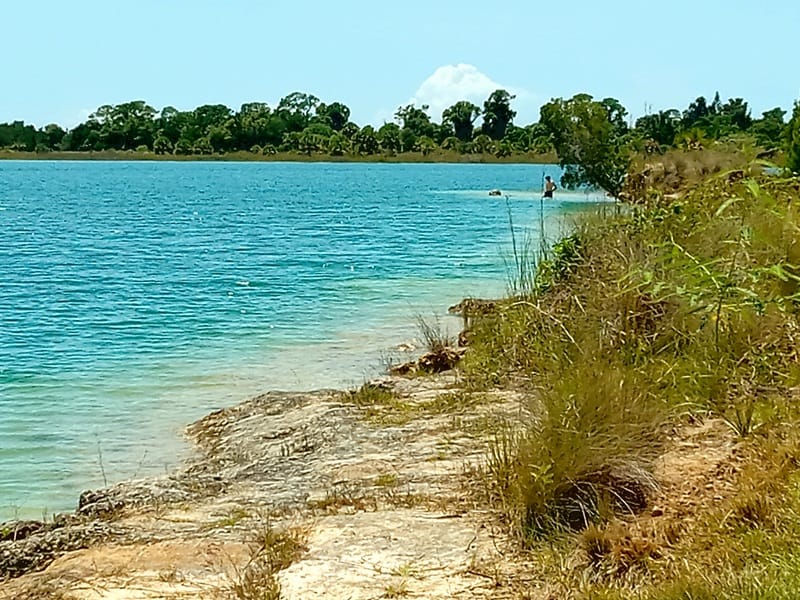
The district has also implemented several measures to protect wildlife in the preserve. They have established a Wildlife Management Area (WMA) to provide habitat for game species, such as deer and turkey, and non-game species, such as wading birds and reptiles. The district has also implemented measures to protect the endangered species that call the preserve home, such as the gopher tortoise and the Florida scrub jay.
Visiting Information
Address
2345 Osowaw Boulevard Spring Hill, FL 34607
It’s at the junction of Osowaw Boulevard and Petit Lane.
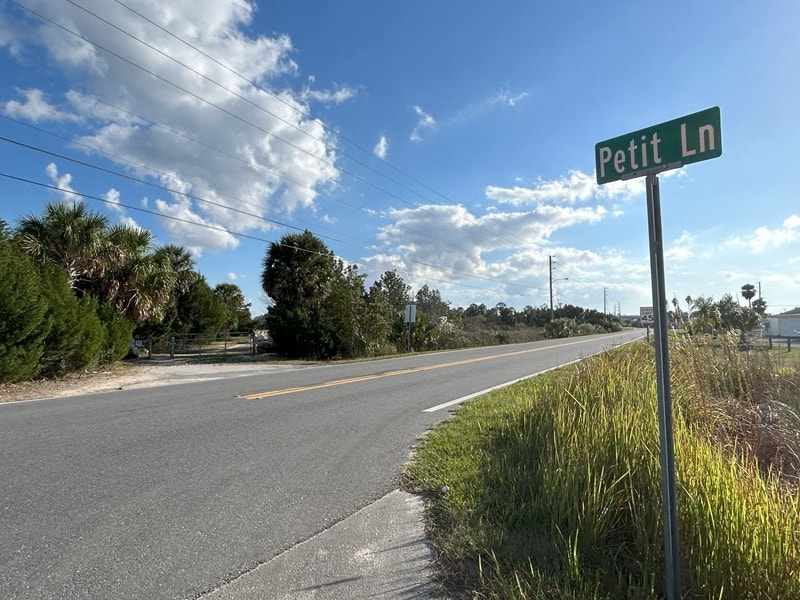
Entry Gate
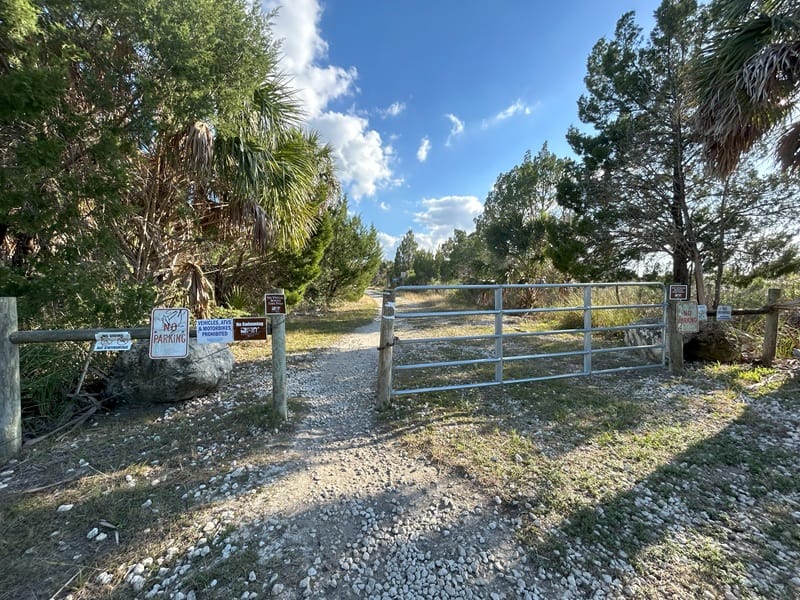
Parking
There is no parking inside the Weeki Wachee Preserve. You must park across the street in the parking lot facing the Osowaw Boulevard gate. This parking area extends 1½ miles north to the Blue Pelican Marina with restroom facilities. Parking is free.
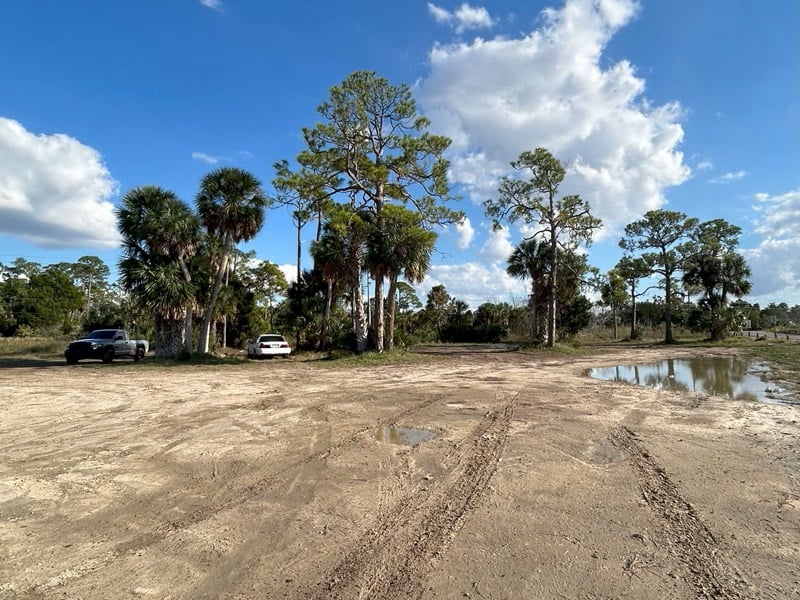
Hours and Admission
Weeki Wachee Preserve is open daily to the public from 30 minutes before sunrise until 30 minutes after sunset. There is no admission fee, making it an excellent option for the budget-conscious explorer.
Weeki Wachee Preserve Rules and Regulations
To ensure visitors’ safety and preserve the natural environment, visitors must follow some rules and regulations. Visitors are not allowed to camp or build fires in the preserve. Additionally, visitors are prohibited from disturbing or harming any wildlife or plant life in the preserve.
Visitors are also advised to stay on the designated trails and not to venture off-trail. This helps to prevent damage to the natural environment and ensures that visitors do not accidentally harm themselves.
Future Plans for the Preserve
The Weeki Wachee Preserve has been the subject of various plans and proposals. Some of these plans have been controversial, while the community has welcomed others. Here are some of the current plans for the preserve:
Expansion of Recreational Activities
Hernando County is considering adding more recreational activities to the Weeki Wachee Preserve. A feasibility study was conducted 2021 to determine what activities could be added to the preserve without harming the environment. The study suggested adding bike trails, camping areas, and picnic facilities. The county is still reviewing the study’s findings and has not yet decided.
Development of a Beach
There have been plans to develop a beach in the Weeki Wachee Preserve for many years. The latest plan involves creating a small beach area with a concession stand and restrooms. The beach would be near the Weeki Wachee River and accessible by kayak or canoe. The plan is still in the early stages, and it is unclear when construction will begin.
Protection of Wildlife and Environment
The Weeki Wachee Preserve is home to a diverse range of wildlife, including several endangered species. To protect these species and the environment, Hernando County is proposing new regulations for the preserve. The proposed regulations would limit the number of visitors to the preserve, restrict certain activities, and require visitors to follow specific rules to protect the environment.
Overall, the future of the Weeki Wachee Preserve is still uncertain. While there are plans to expand recreational activities and develop a beach, there are also concerns about the impact of these activities on the environment and wildlife. Hernando County is working to balance these concerns with the community’s needs and visitors to the preserve.
Frequently Asked Questions
What is the size of the Weeki Wachee Preserve?
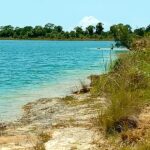
Weeki Wachee Preserve is a vast nature preserve near Spring Hill and Weeki Wachee on Florida’s Nature Coast. It encompasses more than 11,000 beautiful natural habitats, including freshwater and saltwater marshes, swamps, and uplands.
What kind of animals can be found in Weeki Wachee Preserve?

Weeki Wachee Preserve is home to a diverse range of flora and fauna. Visitors can spot various animals, including white-tailed deer, bobcats, otters, wild turkeys, and many species of birds. The preserve is also home to several species of reptiles, including snakes, lizards, and turtles.
Are there alligators in Weeki Wachee Preserve?

Yes, alligators can be found in Weeki Wachee Preserve. Visitors should be cautious when exploring the preserve and keep a safe distance from any wildlife they encounter.
Can you swim in Weeki Wachee Preserve?

Swimming is not officially allowed in the bodies of water in Weeki Wachee Preserve. However, people do.
Where can I find a trail map for the Weeki Wachee Preserve?

Visitors can find a trail map for Weeki Wachee Preserve on the Southwest Florida Water Management District website. The map provides information on the preserve’s hiking and biking trails, habitats, and wildlife.
Closing Thoughts
The preserve is perfect for those who want to experience Florida’s natural and unspoiled beauty. Visitors can enjoy hiking, biking, birdwatching, and nature photography in this beautiful, serene environment.
Weeki Wachee Preserve is a unique and beautiful natural area that offers visitors an opportunity to experience the diverse ecosystems of Florida. The preserve is a must-visit destination for nature lovers and outdoor enthusiasts with its various habitats, wildlife, and recreational opportunities.
With its diverse range of habitats and wildlife, the Weeki Wachee Preserve is a must-visit destination for nature lovers and outdoor enthusiasts.
Looking for more things to do in Florida? Start here:
- Homosassa Springs Florida
- Kayak Weeki Wachee Springs
- Kelly Park – Rock Springs
- Kings Landing, Florida, and The Iconic Emerald Cut
- Weeki Wachee Spring’s Buccaneer Bay Water Park
- Wekiva Island, Florida – The Locals Retreat
- Wekiva Falls RV Resort – Sorrento’s Hidden Spring
We participate in the Amazon Services LLC Associates Program, an affiliate advertising program designed to provide a means for us to earn fees by linking to Amazon.com and affiliated sites.
Brit On The Move™ Travel Resources
Ready to book your next trip? Use these resources that work:
Was the flight canceled or delayed? Find out if you are eligible for compensation with AirHelp.
- Book your Hotel: Find the best prices; use Booking.com
- Find Apartment Rentals: You will find the best prices on apartment rentals with Booking.com’s Apartment Finder.
- Travel Insurance: Don’t leave home without it. View our suggestions to help you decide which travel insurance is for you: Travel Insurance Guide.
- Want to earn tons of points and make your next trip accessible? Check out our recommendations for Travel Credit Cards.
- Want To Take A Volunteer Vacation or a Working Holiday? Check out the complete guide to how here!
- Want to Shop For Travel Accessories? Check out our Travel Shop.
Need more help planning your trip? Visit our Resources Page, which highlights the great companies we use for traveling.